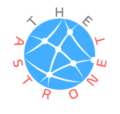Life on Venus?

This week, a new research article was published that announced the detection of a biosignature in the atmosphere of Venus. Hold up – did someone just say life on Venus? Does this mean we’ve done it? We’ve finally succeeded in detecting extraterrestrial life? Unfortunately not. And this brings us to the most important question: What do we know?
The research team responsible for this fascinating study announced the detection of a biosignature molecule called phosphine, or PH3, in the atmosphere of Venus. Something is a biosignature when its presence could indicate life, or biology. Thus, this single, tiny molecule is the gem of their paper; it’s surprisingly abundant presence has turned the world’s attention to Venus as a possible candidate for life.
As it turns out, this is in fact not the first time that we’ve detected PH3 outside of the Earth’s atmosphere, and our first detection of PH3 elsewhere in the Solar System happened almost five decades ago. PH3 had been discovered in the gas giants Saturn and Jupiter back in the 1970s, and we have learned that a significant amount of PH3 can be formed in natural geological process elsewhere in the Solar System, but this is only under immensely high pressures and temperatures, the likes of which are not found in the rocky planets. In addition, while it is true that PH3 can also be produced by natural activity from volcanos, lightening strikes, and the interaction of sunlight in the atmosphere, the researchers in the study ruled out each of these options as sources for the PH3 on Venus since none could have produced as much PH3 as was detected in the study. However, a major source of PH3 on Earth is microbes, specifically microbes that do not require oxygen to survive; it is for this very reason that PH3 has been designated the title of biosignature. The researchers found that the only currently known source of PH3 that could lead to such a large amount of it in the Venetian atmosphere would be living organisms.
This leaves us with three primary options:
- We are dealing with an unknown unknown – the PH3 was formed in the atmosphere of Venus via a chemical reaction we have not yet discovered. The researchers in this study have acknowledged this possibility in their paper: “Even if confirmed, we emphasize that the detection of PH3 is not robust evidence for life, only for anomalous and unexplained chemistry.”
- The detection of PH3 was an error – though unlikely, this option must still be considered. This is another reason why researchers around the world are working independently to reach similar findings of phosphine; greater consensus within the scientific community is key to the reliability of a discovery.
- We have discovered extraterrestrial life – a massive and game-changing conclusion that must not be taken lightly, and would require years of additional research and analysis to confirm, in addition to missions to Venus to take samples.
In science nothing is certain, and we must never jump to conclusions. That being said, this result is a cause for celebration. Venus has largely been overlooked in recent missions to space, and planetary scientists and astrobiologists are rejoicing at this opportunity to take a closer look at Venus. It seems likely that the detection of PH3 in its atmosphere will fuel future missions to our sister planet in the near future. While we may never find life on Venus, we can be sure that there are more discoveries to be made on its planetary processes, geology, and atmosphere. And who knows? These future missions may lead to a even more surprising finding.
Here is the link to published scientific article quoted above, titled ‘Phosphine gas in the cloud decks of Venus’: https://www.nature.com/articles/s41550-020-1174-4.pdf
Author: Amélie Sharples
